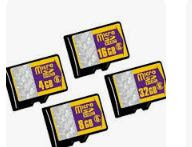
How to Make UPI Payments Without an Internet Connection,
Unified Payments Interface (UPI) itself is one of the most popular digital payment systems at the moment, especially in countries like India. This system makes it easy for users to carry out transactions instantly via cellphone. However, many users wonder: what if there is no internet connection? Is UPI still usable at this time?
It turns out, UPI offers a solution for those in locations with limited internet access. This latest article will also explain how to make UPI payments without an internet connection, the steps, security, and the benefits that can be obtained from this feature.
What is UPI Offline?
UPI Offline is a payment feature that allows users to carry out transactions without the need for an internet connection. This feature operates via USSD (Unstructured Supplementary Service Data), which is used to communicate between the phone and the mobile operator's system. With this feature, users need to have a basic cellphone and an active cellular network. The UPI Offline feature is beneficial for those who live in remote areas or have limited internet access.
Requirements to Use UPI Without Internet
Before you start, make sure you meet the following requirements :
1. Mobile Number Registered with Bank
- Your mobile number must be linked to a UPI enabled bank account.
2. UPI Registration
- You have to register yourself on the UPI platform through your banking app or a third-party UPI app like Google Pay, PhonePe or Paytm.
3. Active USSD Code
- You need a USSD code to access UPI Offline services. In India, the standard code for UPI is *99#.
4. Sufficient credit balance
- Because this service uses USSD, make sure you have enough credit. Fees per transaction are usually very small, depending on your mobile operator.
Steps to Make UPI Payment Without Internet
Here is a complete guide to make UPI payments without internet connection :
1. Access UPI via USSD Code
- Open the calling app on your phone.
- Type *99# and press the call button.
- You will see the UPI menu appear on the screen.
2. Select the Desired Service
After entering the code, the following menu will be displayed :
- Send money
- Demand for Money
- Check Balance
- Change UPI PIN
- Other Services
- For payment, select option 1. Send Money by typing the numbers and "Send."
3. Enter Recipient Details
You will be asked to enter recipient details. Choose one of the following methods :
- Mobile Number (linked to recipient's UPI ID).
- Direct UPI ID (example: abc@upi).
- Account Number and IFSC for direct bank transfer.
4. Enter the Payment Amount
Once the recipient details are entered, you will be asked to enter the money you want to transfer.
5. Enter UPI PIN
- As a final step, enter your UPI PIN to authorize the transaction. Once successful, you will receive an on-screen confirmation.
Security in Offline UPI Use
1. UPI Offline is designed with a high level of security in mind. Here are the security features :
- UPI PIN as Authentication : UPI PIN is confidential and only known to the user. Without a PIN, transactions cannot be carried out.
- No Data Storage on Phone : Transaction details are not stored on the device, so the risk of a data breach is minimized.
- Real-Time Transactions : Every transaction is processed directly by the bank, reducing the possibility of data manipulation.
2. Secure USSD Code
USSD codes can only be accessed from mobile numbers registered with the bank.
Benefits of Using UPI Without Internet
Using UPI Offline has several benefits, here are some of them :
- Wide Connectivity : This feature can be used anywhere, as long as a cellular network is available.
- Easy to Use : No need for a smartphone or additional apps, just use a basic phone.
- Cost-Effective Transactions : USSD fees are very low, making it affordable for users on a limited budget.
- Suitable for Emergency Situations: In an emergency or when the internet connection is interrupted, UPI Offline remains reliable.
- Financial Inclusivity : This feature helps reach people who do not have access to advanced technology, encouraging financial inclusion.
Limitations and Challenges
While this feature is very useful, there are some limitations to be aware of :
- Daily Transaction Limit : Most of the banks limit the number of daily transactions through UPI Offline.
- USSD Menu Complexity : For new users, navigating through the USSD menu may be a little confusing.
- Dependence on Cellular Operators: The quality of the cellular network greatly influences the smoothness of transactions.
- Limited Features : UPI Offline does not support certain features such as ticket purchasing or bill payment.
Tips to Optimize Offline UPI Usage
- Save USSD Code : Make sure you remember or save the USSD code (*99#) for quick access.
- Update UPI PIN Regularly : To increase security, change your UPI PIN periodically.
- Check Credit Balance: Make sure you have sufficient credit balance before using this service.
- Study the Menu Well: Familiarize yourself with the USSD menu to speed up the transaction process.

















